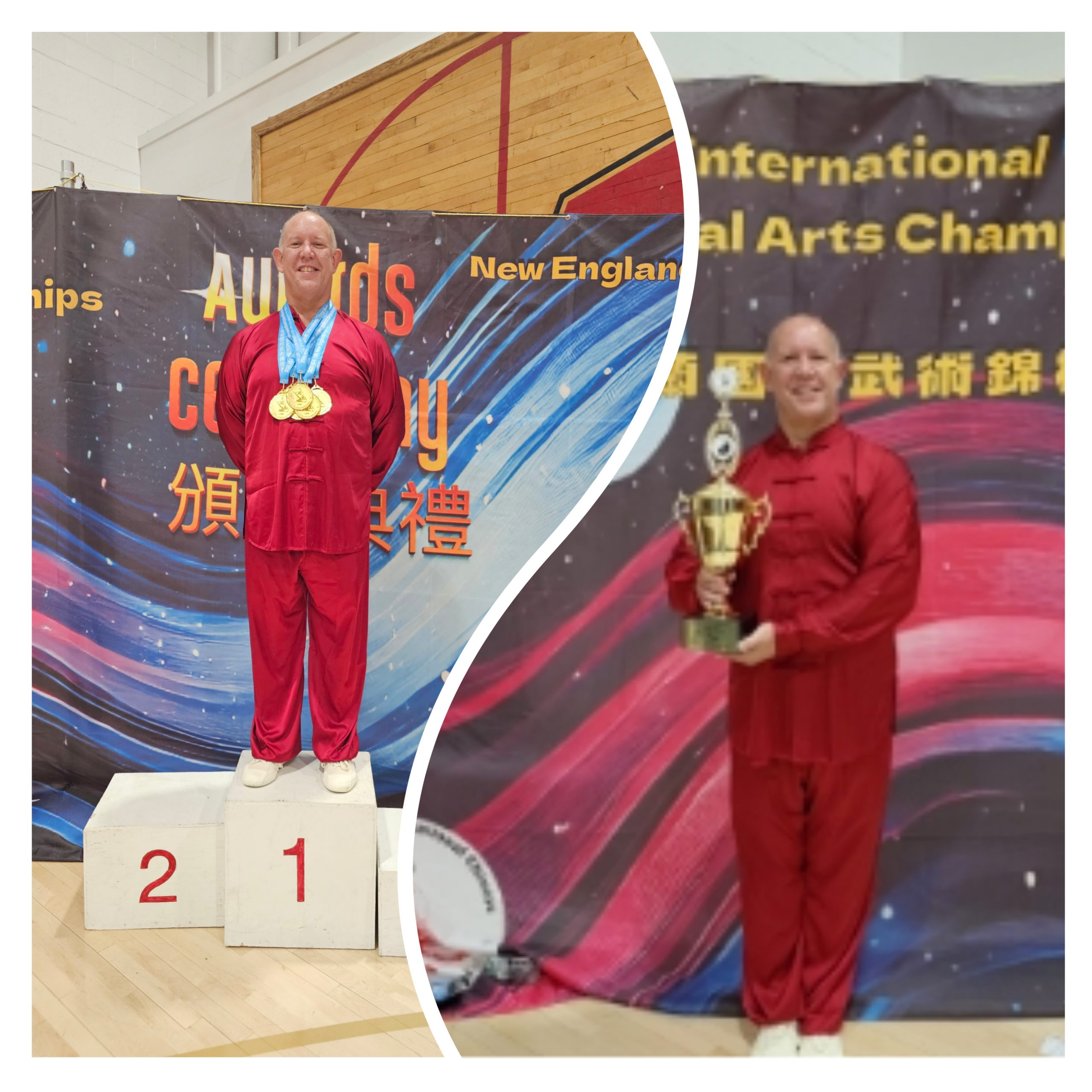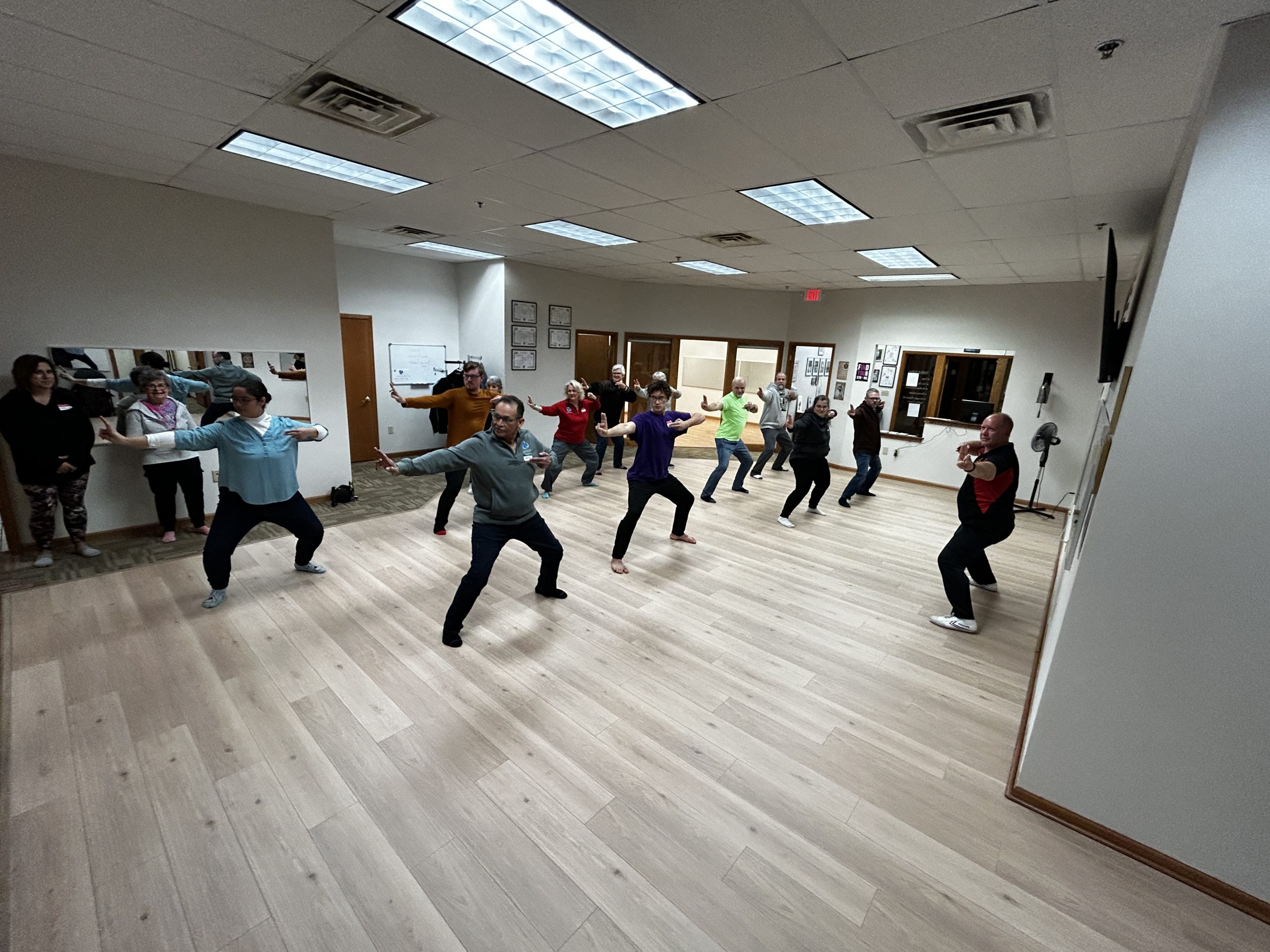Wisconsin Tai Chi Academy is pleased to announce a new partnership with Midwest Shorin-Ryu Health and Wellness Center to include Tai Chi classes as part of their range of services
Tag: taiji

WTCA Brings Home 6 Gold and USA National Tai Chi Grand Champion Cup from New England International Chinese Martial Arts ChampionshipsWTCA Brings Home 6 Gold and USA National Tai Chi Grand Champion Cup from New England International Chinese Martial Arts Championships
Wisconsin Tai Chi Academy’s Founder and Head Instructor, Sifu Ray Gates, has successfully won six gold medals and the USA National Tai Chi Grand Champion Cup for his gender and

WTCA Wins 7 Gold Medals at 2025 National Senior GamesWTCA Wins 7 Gold Medals at 2025 National Senior Games
Three students and Sifu Ray Gates from Wisconsin Tai Chi Academy have successfully won seven gold medals at the 2025 National Senior Games held in Des Moines, Iowa. This year

WTCA Celebrates Ten Years of Teaching Tai ChiWTCA Celebrates Ten Years of Teaching Tai Chi
This year Wisconsin Tai Chi Academy celebrates its tenth year of providing classes and other services in Tai Chi and Qigong. Established by Founder and Head Instructor, Sifu Ray Gates,

WTCA Student Wins Gold at 2025 Golden State International Wushu (Online) ChampionshipsWTCA Student Wins Gold at 2025 Golden State International Wushu (Online) Championships
It gives us great pride to announce that one of our students has recently competed in the 2025 Golden States International Wushu (Online) Championships and been awarded three gold medals

How Tai Chi and Qigong Benefit the WorkplaceHow Tai Chi and Qigong Benefit the Workplace
Many workplaces have come to realize the important of caring for the health and well-being of their workers. High stress environments, productivity demands and maintaining a work-life balance are common

WTCA Continues Gold Tai Chi Performances at CompetitionWTCA Continues Gold Tai Chi Performances at Competition
Wisconsin Tai Chi Academy has continued to demonstrate competition winning level Tai Chi over the last two months, bringing home a total of 14 gold medals from the 2024 Presidential

New Class Commencing in Wauwatosa, WINew Class Commencing in Wauwatosa, WI
Wisconsin Tai Chi Academy is pleased to announce the opening of a new class in Wauwatosa, WI. Commencing July 16, 2024, WTCA will be offering classes at Mount Mary University

Manitowoc Public Library Hosts “Teen Hang-Out: Meditation and Movement – Beginner’s Tai Chi” Featuring WTCAManitowoc Public Library Hosts “Teen Hang-Out: Meditation and Movement – Beginner’s Tai Chi” Featuring WTCA
As part of Wisconsin Tai Chi Academy’s Corporate and Community Program, we are pleased to announce a collaboration with Manitowoc Public Library to hold an introduction to Tai Chi and

WTCA Wins 6 Medals from 2024 Golden State International Wushu ChampionshipsWTCA Wins 6 Medals from 2024 Golden State International Wushu Championships
Competitors representing Wisconsin Tai Chi Academy in the 2024 Golden State International WushuChampionships Online Competition have been won a total of three gold and three silver medals in various events.

